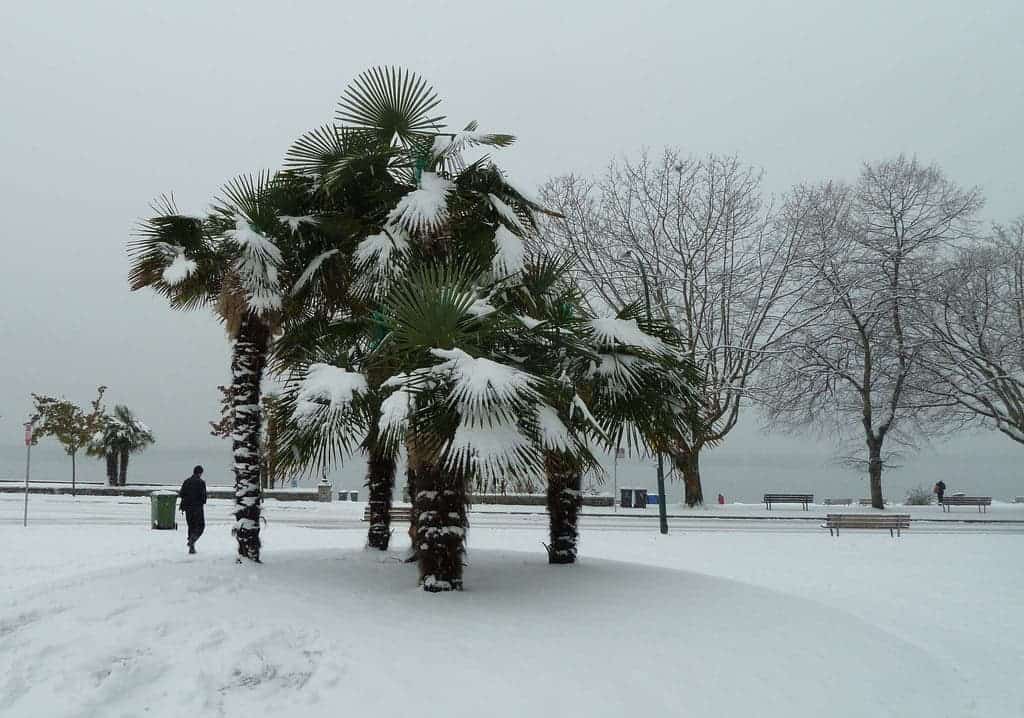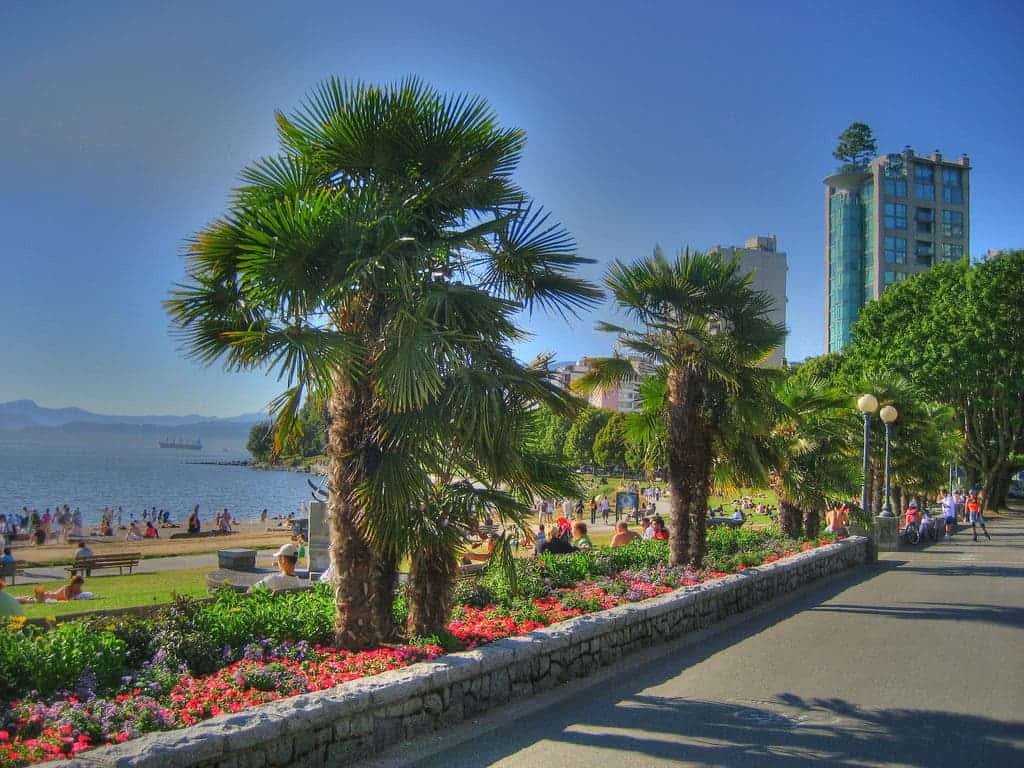
Did you know you can find palm trees in Canada’s Lower Mainland? If you’re in Vancouver during the summer, you might forget where you are for a second as the warm weather and palm trees transport you to a Mediterranean paradise. But wasn’t Canada supposed to be freezing?
Vancouver is, in fact, the warmest of Canada’s major metropolitan cities in winter — by far. Like the rest of the British Columbia Coast, the city is tempered by the North Pacific Current, and the cold Arctic air which usually pounds the rest of Canada with heavy snow and freezing temperatures spares Vancouver. The city has the Rocky Mountains to thank for blocking the cold Arctic air.
As a result, winters are quite mild in Vancouver. Snows with depths greater than 1cm only occur 10 days a year compared to 65 days in Toronto. Instead, the city’s western maritime climate fosters wet and foggy weather. The weather can also be capricious. In a matter of days, the weather can move from warm and sunny to cold and frigid.
That’s not to say it doesn’t get freezing cold in Vancouver. The truth is, most palm tree species can’t survive outside all year round in Vancouver. However, according to Brian Quinn, the Vancouver manager of park operations, three or four species can. Most palms in the city are Trachycarpus fortunei, also known as windmill palms. These are native to China, Burma, North India where they grow in cold weather for a palm. Once established “they can withstand some pretty chilly weather,” said David Tracey, an arborist and author of the Vancouver Tree Book.

The most outdoor palms you’ll find in the city is around English Bay, which is about two or three degrees F warmer than the rest of the city. You can spot around 60 palms here, all suited to below-freezing temperatures.
The palms are quite sturdy and can survive freezing temperatures provided ice does not form at the tops of the trees. If ice gets in the crown of the palm, it will kill it. It’s the only place where new growth occurs in this palm. This is how Vancouver lost two of its palms at English Bay in the last 20 years.
“We find that as long as the temperature doesn’t go below -12 C…at -12 C you start to see maybe a little damage. But those trees won’t be killed unless the temperatures go much below that,” said Douglas Justice, associate director of horticulture at UBC Botanical Garden.
Palms have become so popular in Vancouver that you can see them in people’s private backyards. Yet palms in the rest of the Lower Mainland don’t seem to be fairing nearly as well as in Vancouver. Higher elevation and areas further inland are not suitable for palms because of the cold wind during the winter.


